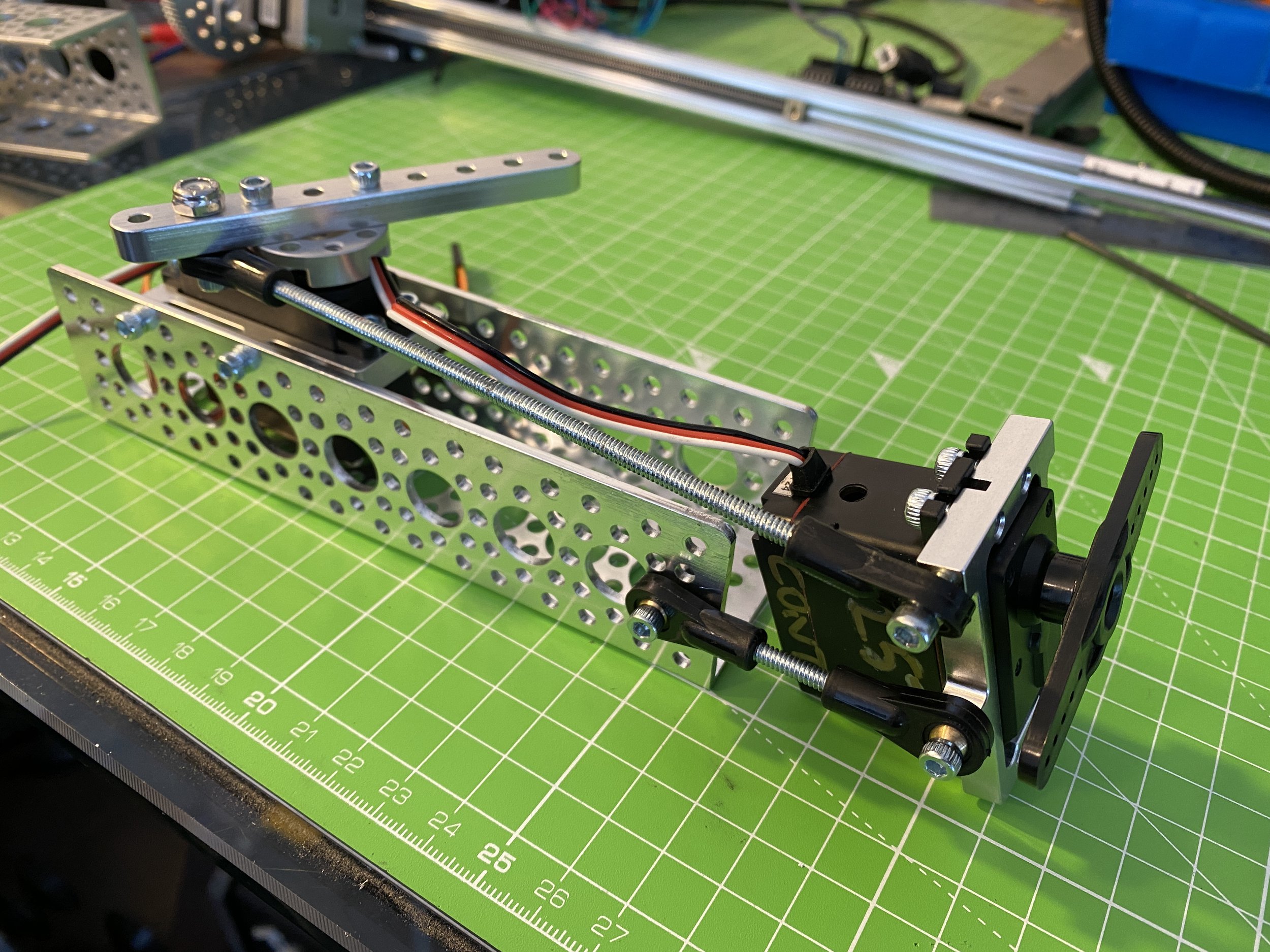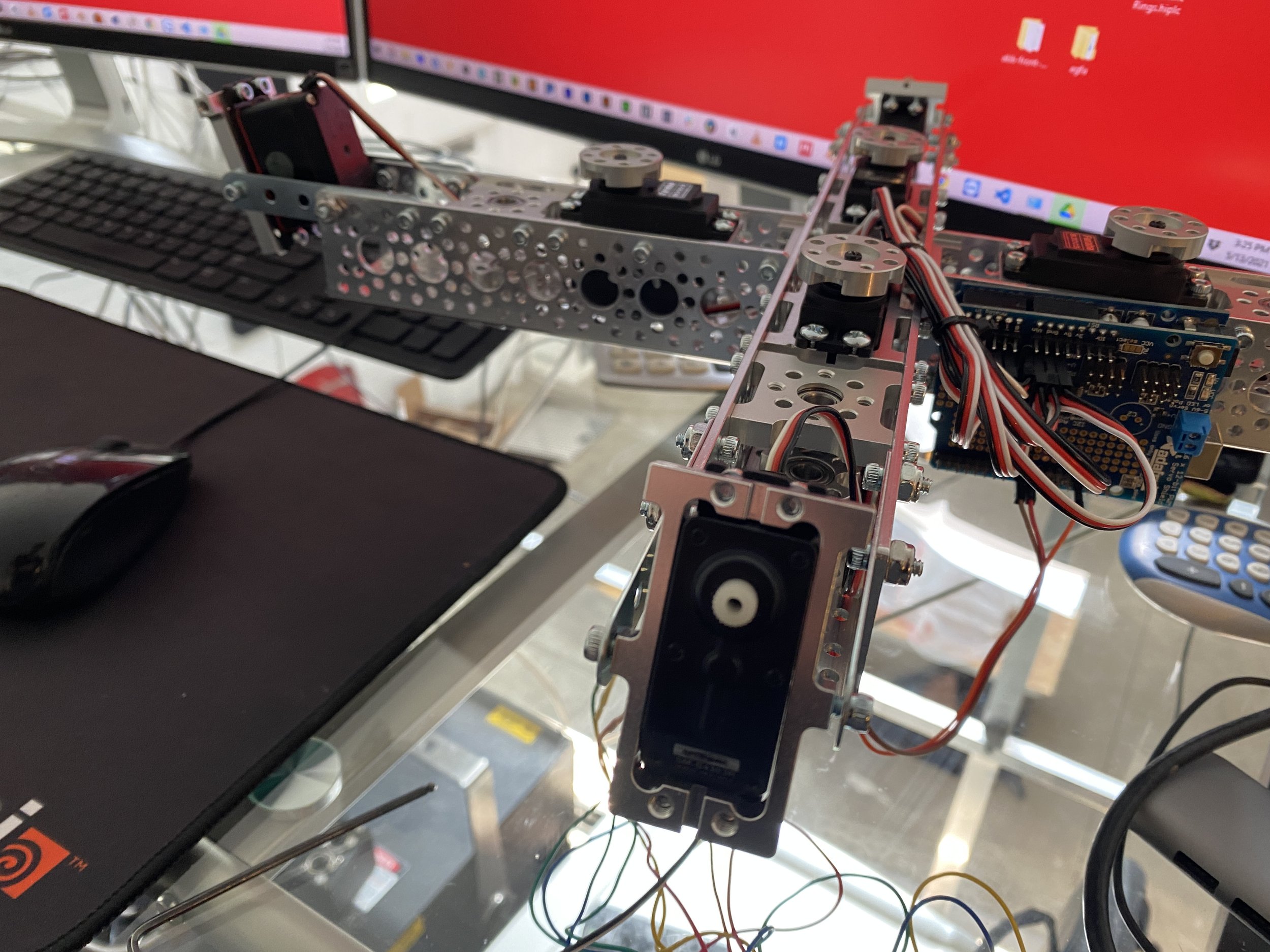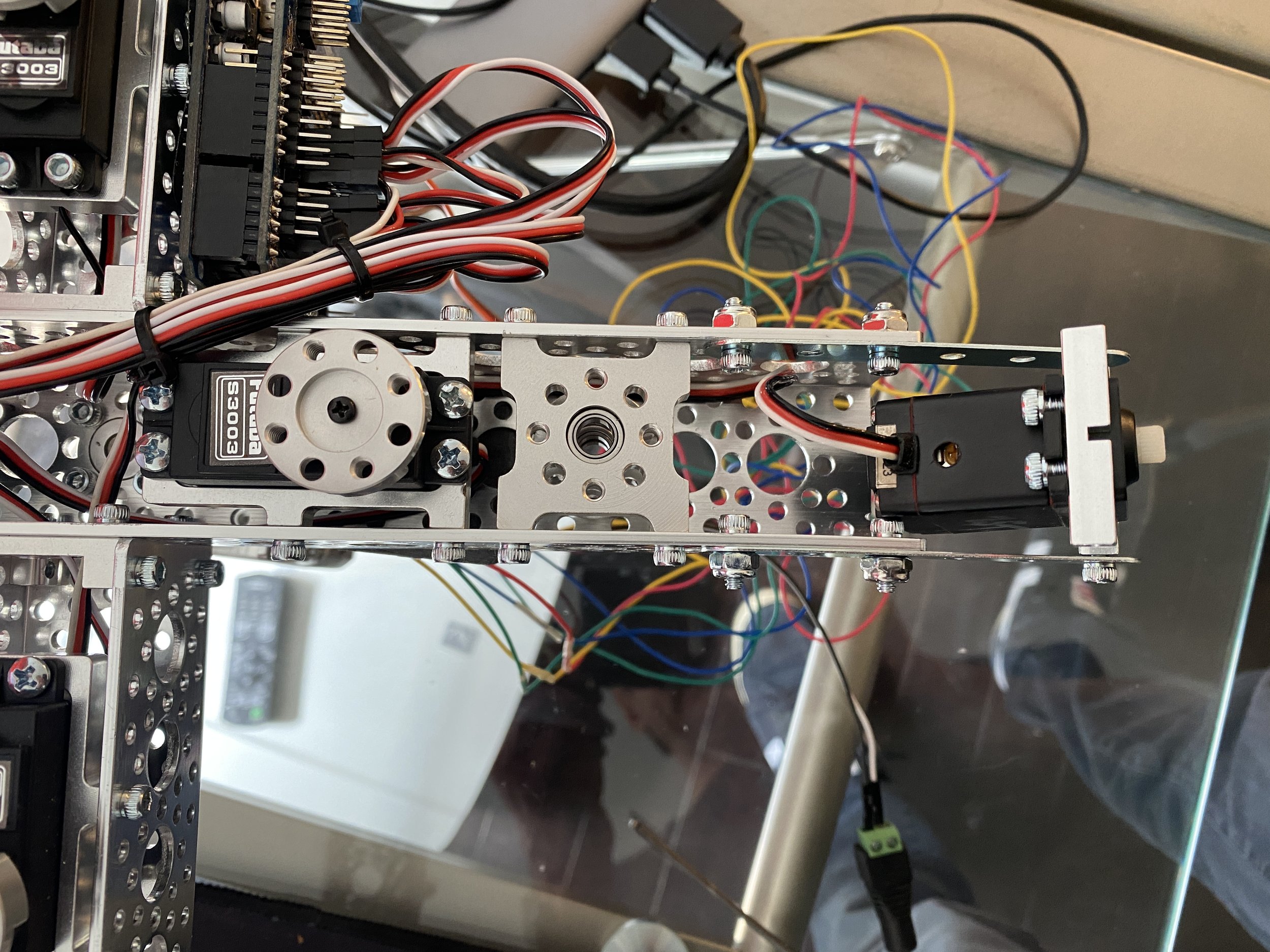Robotic Product Carousel
We designed and built a mockup vending machine-type kiosk showcasing holographic watches. The prototype will display a total of four watches that are mounted to a carousel device. The carousel is rotated to present each watch by waving your hand in front of the kiosk. The physical watches also rotate separately, so this was quite a complex mechanism.
The carousel rotation is controlled by a geared down stepper motor through an Arduino Uno. At the end of each arm is a continuous rotation servo which mounts to a flat plate that the watch was attached to. I experimented with multiple designs, all with their own set of problems. Actobotics parts from ServoCity.com made this somewhat easy to iterate. The challenges had to do with vibration issues and motor sounds.
I managed to overcome the vibration issues by using a variety of gear ratios and quiet stepper controllers, but it’s really a long and tedious iterative process to get this working as expected. For a mechanism that is meant to hold four total watches, it’s very complex. The starting goal of this project was to have the carousel rotate at perfect 90 degree angles and decelerate to a stop. When it hits its position, internal lighting fades in on the watch, while gentle music plays in the background and the watch slowly begins to pan and tilt in place.
For the pan and tilt, I used a combination of 2 servos and experimented with tiny stepper motors as a backup. Unfortunately we had to abandon the tilt and stick with pan only, as there was too much vibration. With so little space to house all of the components and with the need to quickly transition from one watch to another, some sacrifices had to be made.
We 3D printed the watch mounts using our resin printer and very carefully double stick taped them down and tied down any loose bands with black thread. The watch mounts are housed inside of a box mounted to the end of each arm on the carousel.
Those had to be carefully lined with laser-cut felt and lit properly. We used our Glowforge to cut the balsa wood box and hot-melt glued it together. Besides the 3rd degree burns on my hand, this was the best method to use as it dries so quickly. Once all the wiring was done, we installed the carousel mechanism inside the kiosk and hotwired some 5 degree spotlights to our Arduinos. Rigging everything as close to the holographic beamsplitter was tricky and time consuming. Below is an image of the final rigging.
Author: Brian Dressel






